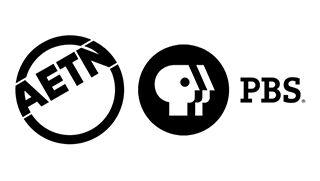AETN Uses Predictive AI Technology to Increase Response Rate and Gift Amount

AETN Uses Predictive AI Technology to Increase Response Rate and Gift Amount
Every August, AETN had mailed an additional gift letter to over 10,000 long-term members. These members have been “in the system” for up to a decade and many show up in the add gift file every year.
According to Patrick Pearce, assistant director of development, its 2016 add gift campaign resulted in a response rate of 5.4 percent and an average gift of $49. These results have been consistent over the years – not going up or down. Pearce began wondering if, apart from reinventing the wheel, was there any hope of improving those numbers – of lifting the response rates by trying a new tactic?
The Experiment
To answer this question, they turned to Arjuna Solutions® and its decision-making engine, ExactAsk™. Arjuna is an artificial intelligence group. Its technology helps nonprofits achieve more efficient and successful fundraising by automating simple decisions on the organizations’ behalf. For instance, instead of asking all donors to give $25, their technology may suggest a personalized ask amount for each potential donor.
“That’s one of the reasons our technology is so effective,” says Adam Treiser, Arjuna’s CEO. “It creates a model for every individual in their donor file and then recommends the best ask amount based on the model of that specific person.” In other words, it uses everything known about each individual—demographics, location, income data and more—to determine his or her likeliness to give within a certain range. “We’re really measuring each donor’s price elasticity. Once we know how elastic each donor is, we can understand how to use the ask amount to influence their giving,” says Treiser. This simple approach works to maximize the results of any campaign.

In August of 2017, AETN partnered with Arjuna to help determine the ask amount for donors in its additional gift mailing. The campaign results were encouraging. The response rate increased 150% percent, from 5.4 percent to 8.1 percent. And the average gift amount increased by ten dollars compared to 2016. The average 2017 gift was $59.
“We’re doing the same thing we’ve always done. It’s just an added feature—there were no other tricks or tests involved,” Pearce says of the August campaign. “In every case, the response rate has either been better than or equal to past results. In every case, the average gift goes up at least $10-12,” says Pearce, despite both data sets being largely populated by the same names.
Long-Term Implications
Treiser says predictive AI technologies are more than just a one-time approach for a single campaign. Why? Because the technology gets better with each use, learning from one campaign to the next. “Our system is not only trying to maximize the output from a particular campaign,” he says. Instead, predictive AI technology is trying to make decisions that maximize a donor’s value to AETN over his or her lifetime.
Based on the responses to each campaign, predictive AI technology begins to learn more and more about each donor, becoming increasingly more accurate. “Our system will take the outcomes from what happened previously and will use them to enhance its knowledge of existing donors,” Treiser explains. That means the results from a single first use may be perfectly satisfying. But the results from the third use will be even more dramatic.
Smaller stations may be wondering if they even have enough data for predictive AI technologies to work. Treiser says the answer is yes. “At the end of the day, we are trying to improve results versus what you could achieve without predictive AI technologies,” he says. His system can benefit groups that have very little information, because part of the basic function of predictive AI technologies is to create data. “Even if you don’t have a lot of data, our system will acknowledge that and will actually start recommending things to help generate that data,” he says. “If we don’t know something about a particular donor, our system will make a recommendation that will, at a minimum, help get a better understanding of that person.”
From Pearce’s perspective at AETN, that has made predictive AI technologies a good investment. “For the fee, you more than make your money back in the average gift,” Pearce explains. “You’re not losing anything. You’re not giving up anything. You’re just doing the same thing but with an added level of research and technology.”
